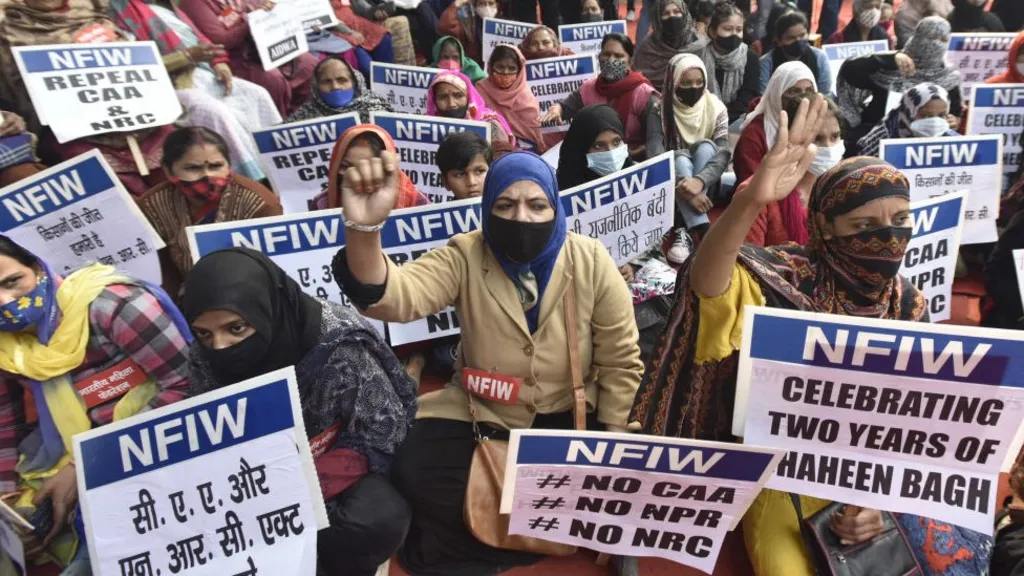India is a dynamic and broadened country that has recently acquired worldwide consideration because of the execution of the Citizenship Change Act (CAA), a critical piece of regulation that has formed the country’s movement regulations. We will look at the set of experiences, items, discussions, and general impacts of the CAA in this piece, with an accentuation on how it avoids Muslims.
-
Introduction
The Citizenship Correction Act, which was passed in [year], is extremely critical while considering India’s position on allowing citizenship to workers. Imagined to take special care of specific strict networks escaping to India, the CAA has created conversations and conflicts, especially with respect to its prohibition of Muslims.
-
Background of CAA
Originating from [historical context], CAA came into effect with the objective of [stated goal]. Understanding its roots is crucial in comprehending the government’s motivations behind its enactment.
-
Provisions of CAA
Eligibility criteria for citizenship under CAA are detailed, with specific religious groups benefiting from its provisions. However, a notable exclusion is the Muslim community. This section will explore the criteria, the covered religious groups, and the implications of excluding Muslims.
-
Controversies Surrounding CAA
Despite its intended purpose, CAA has faced criticism from various groups within India and has garnered attention internationally. Analyzing the controversies sheds light on the complex nature of the legislation and its global implications.
-
Government Perspective
The government has defended the exclusion of Muslims, providing reasons and clarifications. Understanding these perspectives is essential in grasping the intent behind the controversial provision.
-
Impact on the Muslim Community
Excluding Muslims from the ambit of CAA raises concerns about potential consequences and its broader impact on the social and cultural fabric of India. This section will explore the implications for the Muslim community.
-
Legal Challenges
CAA has not been without legal challenges. This section will provide insights into the court cases and petitions filed against the legislation, along with the responses from the judiciary.
-
Public Opinion
Public opinion on CAA varies widely within India and globally. Examining the diverse views and perspectives helps in gauging the broader sentiment surrounding the legislation.
-
Future Implications
As CAA continues to shape India’s migration policies, anticipating possible amendments and understanding its long-term effects on the nation becomes crucial.
-
Addressing Perplexity and Burstiness
Balancing complexity and clarity in discussing CAA ensures that the audience can navigate through the intricacies of the legislation without losing the broader context.
https://youtu.be/3D_Mzn-0kwk?si=OQZk7h3rH_7Qjma_
-
Engaging the Reader
Personal pronouns and a conversational writing style give the material a human touch that increases reader engagement and makes it more approachable.
-
Active Voice and Briefness
The impact of active voice and the importance of brevity in conveying information play a significant role in crafting an effective narrative.

Relationships, Analogies, and Non-serious Inquiries
A drawing in perusing experience is upgraded by utilizing non-serious inquiries to make the text provocative and by utilizing allegories and similarities to develop information.
-
Conclusion
All in all, the Citizenship Correction Act is a vital matter since it bars Muslims. Summarizing the main ideas, we stress the importance of ongoing discussion and analysis of the ramifications in order to promote comprehension and educated debates.
-
FAQs
-
Why was CAA enacted?
CAA was enacted to address [specific reasons], providing a legal framework for certain religious groups seeking refuge in India.
-
How has the international community responded?
The international community has responded to CAA with [diverse reactions], reflecting the global implications of India’s migration policies.
-
What legal challenges does CAA face?
The CAA has been the subject of a few legal claims and petitions, to which the legal executive has answered in various ways.
-
How does CAA impact India’s social fabric?
Excluding Muslims from CAA raises concerns about [potential social and cultural impacts], influencing the broader societal dynamics in India.
-
What are the potential amendments to CAA?
Anticipating potential amendments to CAA is crucial for understanding how the legislation may evolve in response to ongoing debates and critiques.

